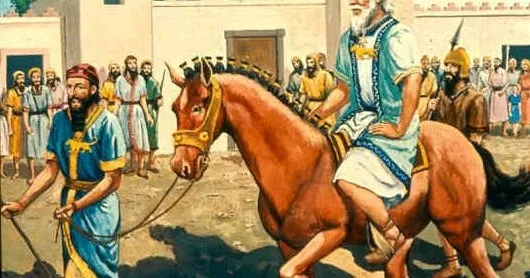Haman and Mordecai, mortal enemies.

I, like many people, have some favorite stories in the bible. One of them, is the story of Esther. She even has her own book in the bible. Now, before we dive into the battle between to main characters in this book, there’s a history that has to be considered. The history is between the Agagites, and the Hebrews / Israelites.
The term "Agagites" refers to the people who were descendants of King Agag, the Amalekite king. The Amalekites were historical enemies of the Israelites, dating back to the time of their exodus from Egypt. The animosity between the Amalekites and the Israelites had deep roots and was based on several factors:
1. Historical Conflict: The Amalekites were one of the first nations to attack the Israelites after they escaped from Egypt (Exodus 17:8-16). This unprovoked aggression left a lasting impression on the Israelites and established a bitter rivalry.
2. Targeting the Weak and Vulnerable: The Amalekites were known for their brutal and ruthless tactics. They targeted the rear of the Israelite camp during their desert journey, attacking the weak, elderly, and stragglers (Deuteronomy 25:17-19). This act was seen as a cowardly and dishonorable action.
3. Spiritual Significance: The conflict with the Amalekites had spiritual implications. In the Bible, the Amalekites came to represent evil and hostility toward God's chosen people. God commanded the Israelites to completely destroy the Amalekites as a judgement for their wickedness (1 Samuel 15:1-3).
4. Land and Resources: As the Israelites settled in the Promised Land, the Amalekites were among the many nations inhabiting the region. The competition for land, resources, and power likely fueled further hostilities between the two peoples.
Because of these historical conflicts and deep-seated animosity, the Agagites (descendants of King Agag) harbored enmity and hatred toward the Jews. Haman, the main antagonist in the book of Esther, was an Agagite and exemplified this hatred. His plan to exterminate the Jewish population in Persia was an extension of the historical feud between the Amalekites and the Israelites.
It's important to note that the biblical account is historical and should be understood in its ancient context. In modern times, it is essential to promote peace, understanding, and reconciliation among different peoples and cultures.
Now that we have a bit of history between these 2 nations, let’s have a look at summary of the book of Esther.
In the Bible, the book of Esther explains the reason behind Haman's intense hatred for Mordecai. Haman was a high-ranking official in the court of King Ahasuerus (Xerxes I) of Persia. He was an Agagite, which means he was likely a descendant of the ancient enemies of the Israelites, the Amalekites.
The primary reason for Haman's hatred towards Mordecai was that Mordecai refused to bow down and pay him homage. According to Persian customs, it was customary to show respect to high-ranking officials by bowing before them. However, Mordecai, being a Jew, refused to bow down to anyone other than God. This act of defiance infuriated Haman and wounded his pride deeply.
Haman's rage over Mordecai's refusal to bow down to him led him to seek not only Mordecai's destruction but also the annihilation of all the Jews throughout the Persian Empire. Haman convinced King Ahasuerus to issue a decree to exterminate the Jewish people, which was planned for a specific date.
Haman's hatred for Mordecai extended beyond just personal resentment. He perceived Mordecai's refusal to bow as a representation of the Jewish people's refusal to conform to the customs and laws of the Persian Empire. This fueled his desire to eliminate the entire Jewish population in a genocidal act.
However, through a series of events and the courage of Mordecai's cousin and adopted daughter, Queen Esther, the evil plot of Haman was ultimately exposed, and he faced the consequences of his wicked intentions. The tables turned, and Haman, along with his sons, were executed, while the Jewish people were saved from destruction. The holiday of Purim celebrates this deliverance and is based on the events described in the book of Esther.